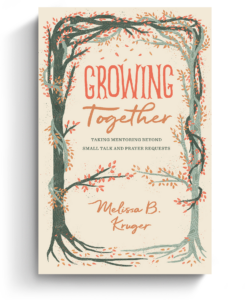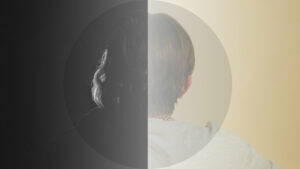Matthew and Luke provide quite different accounts of Judas’s demise. Matthew has Judas hang himself, while Luke ends with Judas’s body burst open (cf. Matt. 27:3–8; Acts 1:18–19).
The discrepancies between the accounts raise a number of questions, most common of which is “How can both be true?” My best guess is this: Matthew describes how Judas chose to kill himself, while Luke describes the final state of Judas’s body (i.e., prostrate on the ground).
But I want to focus on a different question: why would Matthew and Luke choose to describe Judas’s demise in different ways in the first place?
Matthew: Judas as Another Absalom
Why would Matthew feature Judas hanging himself rather than falling to the ground and bursting open? Because Matthew wants us to view Judas’s death in light of a particular biblical backdrop: the death of Absalom, David’s rebellious son.
Absalom’s death is unusual. While out on his mule, he gets his head stuck in the branches of an oak tree, which leaves his body inconveniently “suspended/hung” in midair (2 Sam. 18:9–10). Absalom can thus be said to have died a Judas-like death—or, more precisely, Judas can be said to have died an Absalom-like death. This is significant to the events of Matthew 26–27, as we’ll see.
First, though, a word or two on the concept of “friendship” is necessary. The notion of friendship is described in fraught terms throughout the Old Testament. Judah’s “friend” Hira isn’t much of a friend to him, since he helps Judah cover up his sin (Gen. 38:20). And Job’s “friends” don’t do him much good either. (Other examples can easily be multiplied.)
David has particularly grievous experiences with his friends. He’s repeatedly betrayed by the people closest to him (Ps. 41:9; 55:12–14, 20–21), his son Absalom being a paradigmatic example.
Jesus is to Judas as David is to Absalom. If Jesus is a Davidic Messiah, then Judas is an Absalomic betrayer.
These facts are relevant since, of the four Gospel writers, Matthew in particular portrays Jesus as the “son of David” (Matt. 1:1–17; 9:27; 12:23; 15:22; 20:30–31; 21:15; 22:42–45). Appropriately, then, just as David was betrayed (and expelled from his kingdom) by those closest to him, so too is Jesus. Moreover, only in Matthew’s account of the betrayal does Jesus refer to Judas, rather pointedly, as his “friend” (26:50). This isn’t a mere formality; it’s intended to frame Matthew 26’s events in light of the concept of friendship outlined above, particularly as it relates to David’s experience of friendship.
And that, I submit, is why Matthew portrays Judas’s fate in light of Absalom’s. Jesus is to Judas as David is to Absalom. Or, put differently, if Jesus is a Davidic Messiah, then Judas is an Absalomic betrayer. Hence, just as Samuel’s narrative leaves Absalom isolated, alone, and hung from a tree by his own self-ambition, so too Matthew’s does with Judas.
Luke: Judas as Another Ahab
Additionally, whereas Matthew the tax collector is more interested in the financial side of Judas’s death (i.e., the disposal of ill-gotten gains), Luke the physician is more interested in the bloodshed. Luke also devotes less space to Jesus’s betrayal (two verses rather than four) and more to Jesus’s experience in Gethsemane (Luke uniquely has Jesus’s sweat falling to the ground like drops of blood). Appropriately, then, where Matthew focuses on Judas’s asphyxiation, Luke focuses on Judas’s blood-spilling (Acts 1:18–19) and thus reflects the grim irony of Judas’s fate. (Those who side with Jesus’s enemies in life die a sorry death.)
Luke may also, like Matthew, have a particular Old Testament incident in mind.
Does the Old Testament refer to anyone who sheds innocent blood in order acquire a plot of land—only for his own corpse to be thrown into that plot of land and his blood to stain its soil? It does indeed. That is precisely what happens in the story of Naboth’s vineyard (1 Kings 21; 2 Kings 9:25–26). Like Judas, Ahab exploits his influence in Israel; and like Judas, he sheds innocent blood for the sake of material gain; and consequently, like Judas, Ahab receives his comeuppance.
What is done to Jesus is portrayed as the culmination of what the unrighteous have done to the righteous throughout the generations.
The parallels between Judas’s and Ahab’s lives are important for a further reason. Insofar as Luke invites us to view Judas’s death in light of Ahab’s, he invites us to view Jesus’s death in light of Naboth’s, which is highly instructive. Like Naboth, Jesus is a faithful witness. He maintains his integrity in the face of a corrupt regime. He is the owner of a vineyard (Israel!). He is slandered by two false witnesses at a hurriedly convened religious event. And he’s led outside a capital city by his accusers, where he’s put to an ignominious death.
As such, what is done to Jesus is portrayed as the culmination of what the unrighteous have done to the righteous throughout the generations (see the parable of the vineyard in Luke 20:9–18; cf. 11:47–51). At the same time, the resurrection of Jesus completes the story of Naboth, since it reveals how the righteous will be vindicated. Consequently, when Stephen is hauled before the Jewish council, slandered by false witnesses, and led outside the city to be killed (Acts 6–7), he doesn’t appear surprised. The world shouldn’t be expected to treat Jesus’s followers better than how they treated Jesus. God, however, can be expected to vindicate his people in the end.
Don’t Settle for Easy Answers
Matthew and Luke report Judas’s death in different ways, but they do so for discernible reasons.
An important principle emerges from these considerations. The tensions in the Bible are not contradictions. Nor are they meant to be explained away; rather, they’re meant to draw us deeper into Scripture’s details and intricacies. And, of course, since the Bible’s ultimate author is trustworthy, we needn’t worry what a detailed investigation of its contents might uncover. We simply need the confidence and persistence to tarry with the text, rather than grasp at quick-and-easy solutions.
Involved in Women’s Ministry? Add This to Your Discipleship Tool Kit.
 We need one another. Yet we don’t always know how to develop deep relationships to help us grow in the Christian life. Younger believers benefit from the guidance and wisdom of more mature saints as their faith deepens. But too often, potential mentors lack clarity and training on how to engage in discipling those they can influence.
We need one another. Yet we don’t always know how to develop deep relationships to help us grow in the Christian life. Younger believers benefit from the guidance and wisdom of more mature saints as their faith deepens. But too often, potential mentors lack clarity and training on how to engage in discipling those they can influence.
Whether you’re longing to find a spiritual mentor or hoping to serve as a guide for someone else, we have a FREE resource to encourage and equip you. In Growing Together: Taking Mentoring Beyond Small Talk and Prayer Requests, Melissa Kruger, TGC’s vice president of discipleship programming, offers encouraging lessons to guide conversations that promote spiritual growth in both the mentee and mentor.




























